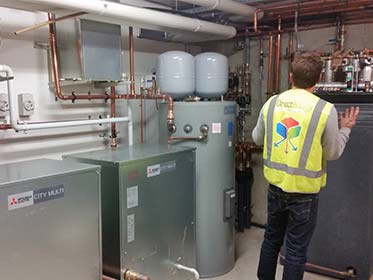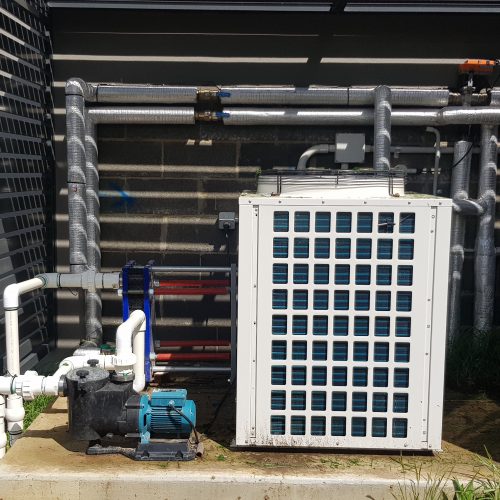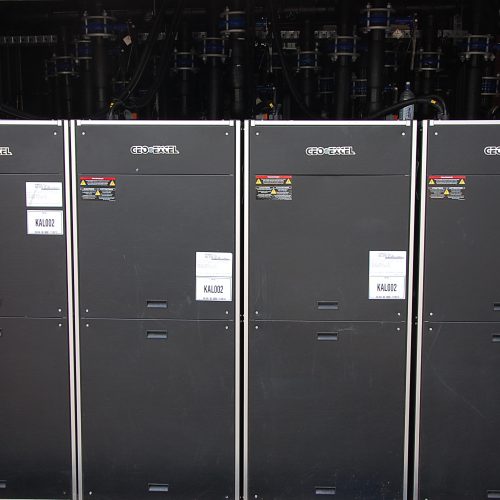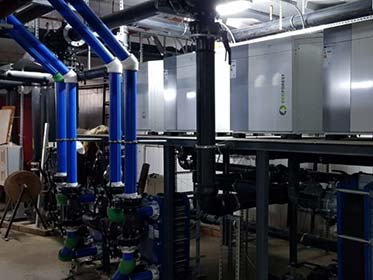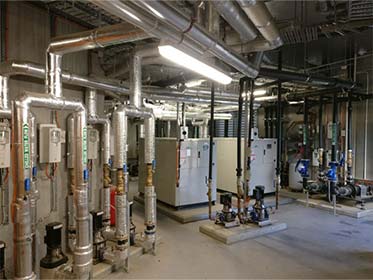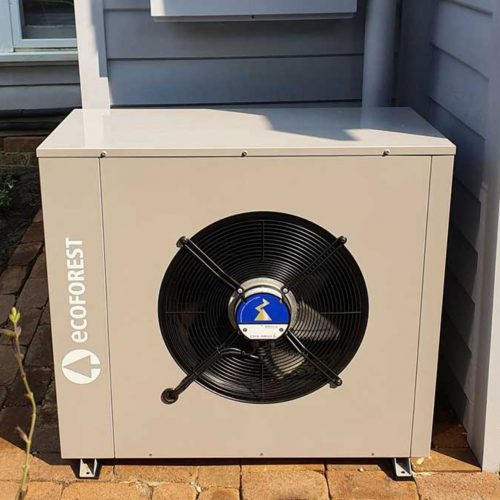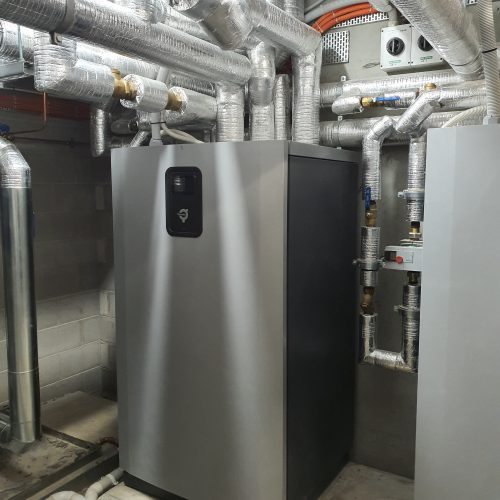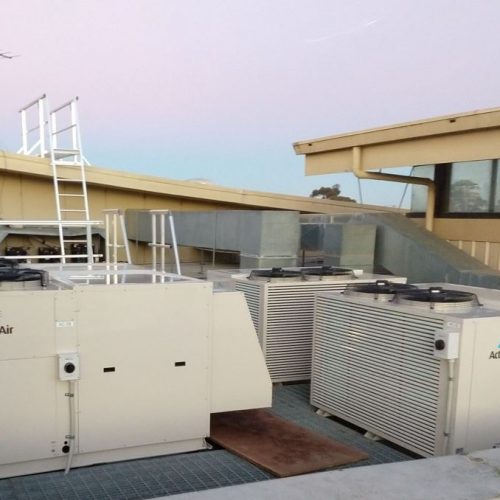Ground Source Heat Pumps & Air Source Heat Pumps
Ground Source Heat Pumps (GSHPs) are used to heat or cool air and water. Air conditioning and hot water systems are typical applications for GSHP’s. They are widely known as being the most energy efficient and environmentally friendly way to heat & cool buildings and produce hot & chilled water.
GSHP’s are like Air Source Heat Pumps (ASHPs), which are best described as conventional air conditioning units or hot water systems that use the air as a source temperature. Heat pump technology is well known as a gas-replacement technology, especially in the new low-carbon energy landscape that is emerging strongly around the world.
Geothermal & Ground Source Heat Pumps Terminology
Globally, vast application of Ground Source Heat Pumps can be found in houses, commercial buildings, aquatic centres, hospitals & precinct energy systems. They utilise the ground’s consistent temperature to heat buildings in the winter and to discharge heat from the buildings into the ground in summer. They can also utilise the heat from water bodies such as lakes, aquifers and the ocean. See Geothermal Solutions for details of the different types of ground loops.
All of the following phrases and acronyms refer to heat pumps that use the ground temperature as a source temperature:
Geothermal Heat Pumps (GHP)
Ground Source Heat Pumps (GSHP)
Ground Coupled Heat Pumps (GCHP)
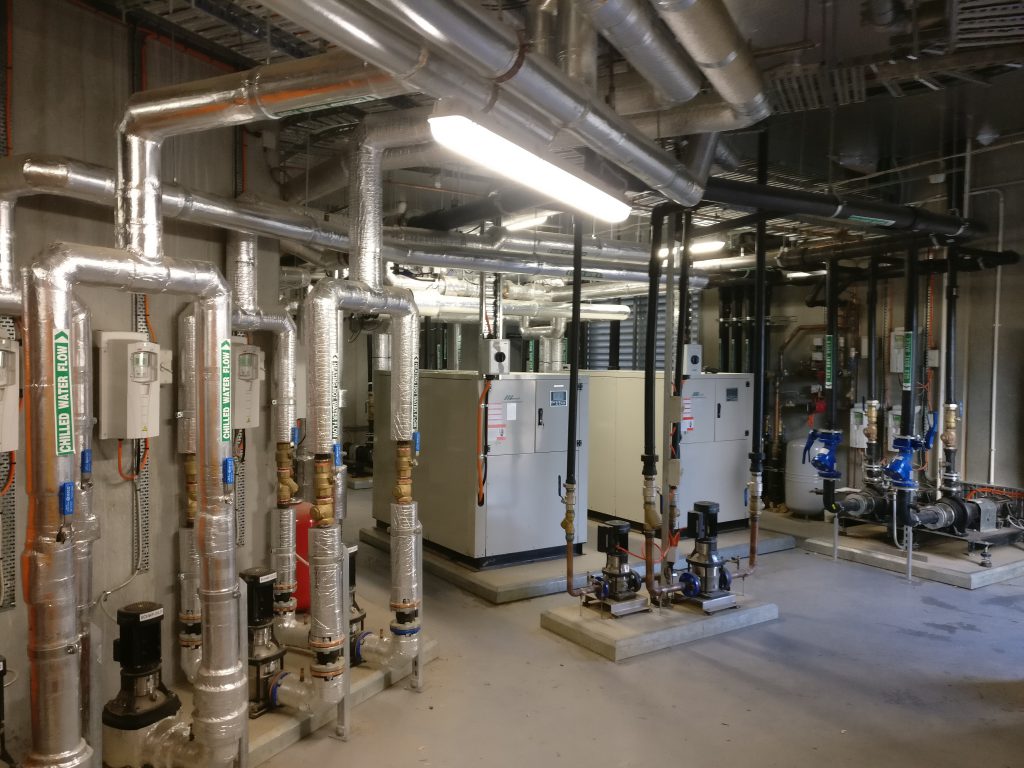
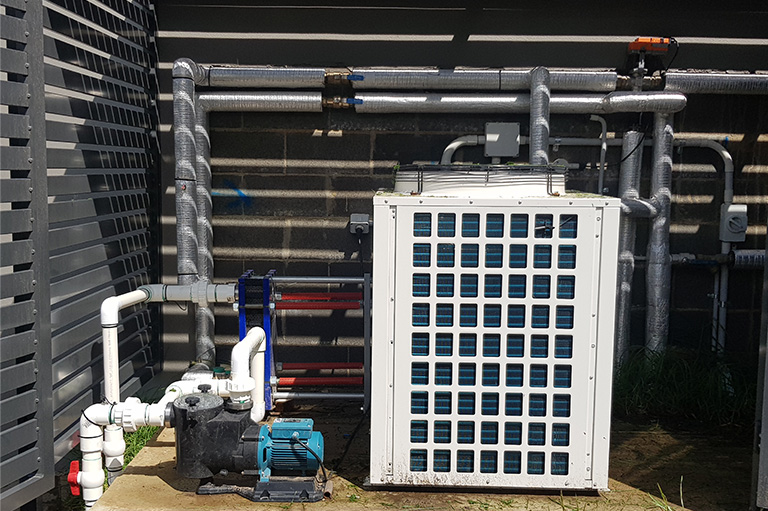
Air Source Heat Pumps
Air Source Heat Pumps are used widely to undertake air conditioning, hot water generation for homes & swimming pools as well as a myriad of other uses that involve heating and cooling. In hot climates they are almost exclusively used for cooling.
Although extremely common, the efficiency of different brands/design of heat pumps varies markedly. They must have ventilation to operate and can compromise a building’s façade when placed on walls and roof tops.
The key to accessing the ground’s stable temperatures is the Geothermal Drilling process or other means of accessing ground temperatures. Drill rigs are used to drill holes typically up to 150 metres deep, although more commonly from 50m to 100m deep. High density polyethylene pipes (HDPE) that are inserted in the bore holes for water to flow down and back up in a closed circuit. Water is used to transfer heat from the ground into the building (heating) or the building into the ground (cooling). Multiple bore holes are usually required to establish a complete GSHP system.
Australia’s uptake of ground source heat pumps is slow, due to a lack of government policy supporting low carbon initiatives of this nature. However, there have been hundreds of installations take place over the past 30 years. Examples of aquatic centres, large commercial buildings and houses are common.
Geothermal Precinct systems are also emerging strongly in the Australian development market.

